The natural ecosystem works in a wonderful yet mysterious way. We can only do so much to protect the bees from its natural predators.
We have identified common beehive pests that can invade your bee’s hive and may cause harm that may eventually destroy the colony. We’ve also listed common bee predators that present danger to your bee’s lives. A complete and more detailed guide can be found in Agrifutures (https://www.agrifutures.com.au/wp-content/uploads/publications/14-098.pdf).
Common Beehive Pests
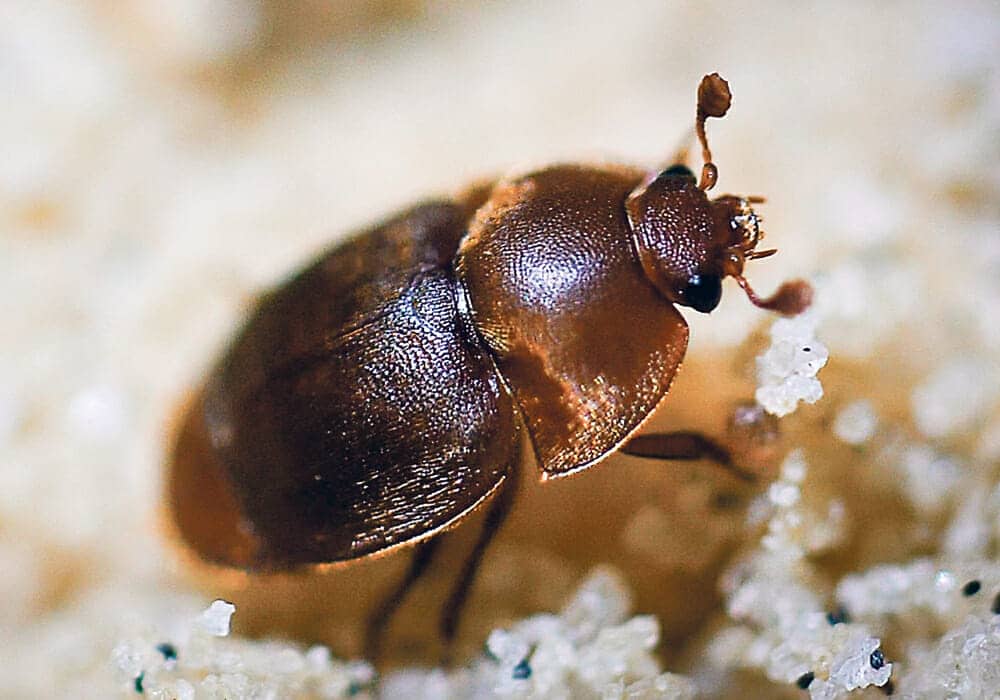
Small Hive Beetle
The small hive beetle is a small brown/black beetle originated from Africa. These guys may be small but they can do a great amount of damage to honey bee colonies, including the brood, honey and pollen. The larvae alone can destroy honeycombs, as well as those taken for harvest. It has caused a major impact on colonies throughout Victoria and Queensland. However, more cases have been detected around NSW, ACT and North WA. The beetle has a preference of a warm to a hot and humid climate, however, is able to adapt to relatively cool climate in Victoria.
Diagnosis
You can diagnose the presence of the beetle through the visibility of the eggs, larvae and/or adults. It also presents symptoms through observing harvested honey. The larvae contaminate the honey with yeast which makes the honey to ferment and look greasy and slimy. It also results in the hive smelling like rotten fruit and slimy texture.
Management
The beetle only infects weak and stressed colonies. Maintain good hive hygiene by keeping the bottom board clean, minimise cracks and crevices in the hive and removing burr comb and propolis. Discarded comb and beeswax scraps left around the hive can attract beetles.
Prevention
Hives should be located in a sunny location, on areas with hard dry soil. Ensure that your hive is ventilated to reduce humidity in the hive.
Traps are also available to set up which are available to other beekeeping supply stores.
Ants
Ants can really be annoying and may cause a lot of trouble in the hive. Some species have the ability to kill bees and steal honey. The common meat ant may cause stress to your bees. Small black ants may nest in the hive however they don’t present too much trouble.
This can be prevented by putting your hives above a hive stand. Most small beekeepers apply grease or oil on the legs to avoid ants climbing up. Ensure that the hive location isn’t around any grass, twigs or fallen leaves that can assist the ants to climb up.
Be cautious with using any pesticide, insecticide or any chemical product. Anything that is hazardous to ants may be dangerous for the bees as well. Make sure to consult with an expert beekeeper or a local beekeeping association before doing so.

Wax Moth
Wax moth larvae is potentially one of the bee pests that can cause serious economic damage to the colony. There are two types of wax moth, the Greater wax moth and the Lesser wax moth. Both species eat beeswax, pollen, remains of larval honey bees, honey bee cocoon silk and honey bee faeces. If there is a wax moth infestation in your hive, it is usually a sign that your hive is not healthy. They mostly infect hives that are infected with a disease and will cause more damage.
Detection
The wax moth can be detected visibly by silk running through the brood that may cause patterns of “bald” broods. Bald broods are caused by bees uncapping cells where the wax moth larvae have tunnelled through. Wax moth larvae usually nest in areas where bees cannot access such as top bars or inner covers. Cocoons will also be a telling sign.
Management
An infestation of the wax moth can indicate that the hive has been unattended. Key prevention is regular inspection of the hives. If your colony is strong, they won’t tolerate the presence of a wax moth in their hive.
If you find that your hive is infested, control measures include:
- Using a nail to find and squash a tunnelling larva.
- Freezing in temperature levels of minus 6.7°C for four-and-a-half hours; minus 12.2°C for three hours; and minus 15.0°C for two hours will kill all life-cycle stages of the wax moth.
- After freezing, ensure that the frames are treated in a moth-proof environment to prevent re-infestation.
- Some types of honey, particularly clover and Lucerne, may candy after freezing.
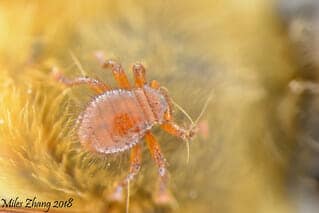
Braula Fly
The Braula fly, previously known as the bee louse, is a small, wingless fly that lives in honey bee colonies. It clings to the hairs of the honey bee and can easily transfer from bee to another. They are only considered to be a minor pest among commercial beekeepers as it can destroy honeycombs, although heavy infestations may affect the queen bee’s egg-laying. The female fly lays eggs under the caps of honey cells. Once they hatch, they consume the honey pollen and beeswax. At present, the Braula Fly is only detected in Tasmania.
Mice
These pests can be annoying primarily during winter where they seek shelter in the hives. They can eat the pollen, honey and combs that are not protected by bees. They also destroy frames and combs to make way for their nests. They are not usually troublesome to a hive that is well-populated, however, they can be a threat to weak colonies. Usually, keeping the bee entrance small will prevent mice from invading the hive.
Predators
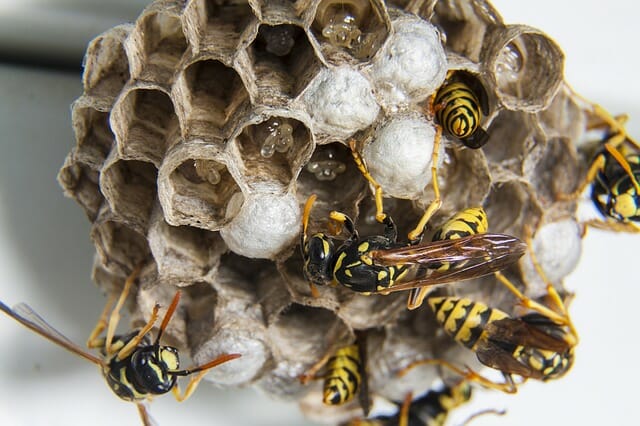
European Wasps
European wasps are also yellow and black striped insects and are mostly mistaken for bees. They live in large, football-sized nests underground or cavities.
Wasps prey on bees to feed their larvae. They are mostly troublesome around winter, where they need sugar. They try to enter the hives to steal honey and the brood. While strong honeybee colonies can fight back, there can be massive losses from live bees getting killed which can make the colony weak.
Most beekeepers set up anti-wasp entrance where they put a small sheet of clear plastic at an angle in front of the hive entrance. Be cautious when dealing with the wasp as they sting repeatedly, making their sting worse than the bees. They are easily agitated.
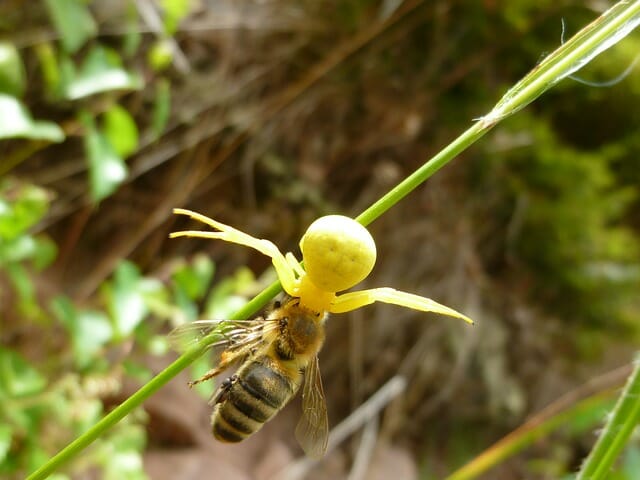
Spiders
Spiders generally prey on bees or any insect, however, they are not relative to a massive bee loss. They may be found under the bottom boards of the hives and sometimes in the ventilator holes.
The Australian Crab spider or the flower spider may be the closest encounter for bees. These spiders’ prey on flower visitors, preferably butterflies, beetles and honey bees.
Dragonfly
The dragonfly is one of the most powerful predators of bees. It is agile, cruising around the hives and pounces on a bee and kills it by drawing juices from its body. Once dragonfly can kill many bees in a day.
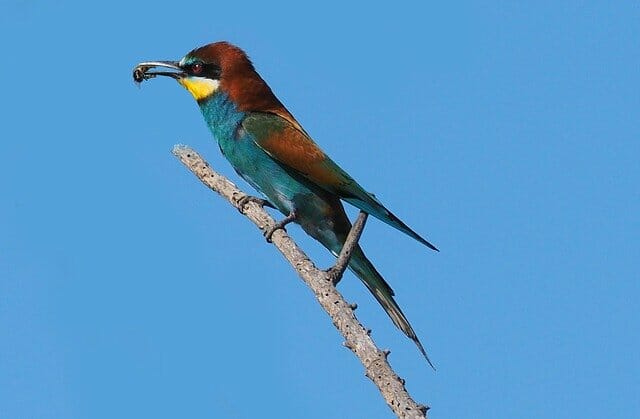
Birds
The Australian Bee-eater or the rainbow bird is another great predator of bees. The bird is mainly present in mainland Australia, mostly Queensland and Victoria. The bird is able to catch honey bees no matter how fast they fly. They mostly prey on the queen bee.

The wood swallow is more numerous than the bee-eater and can present more damage. On cooler months, wood swallows would normally hang around apiaries to catch bees when they leave the hive. They can eat numbers of adult bees.
Are there any other Australian pests or predators that you know of? Let us know!
Thanks for reading 🙂




